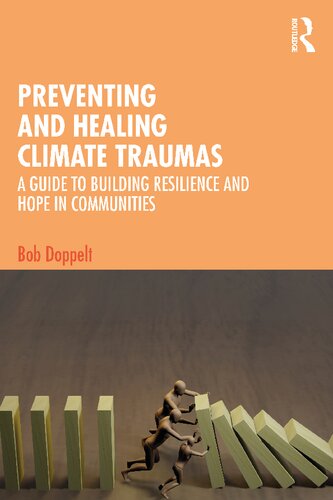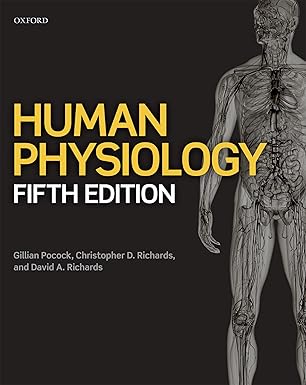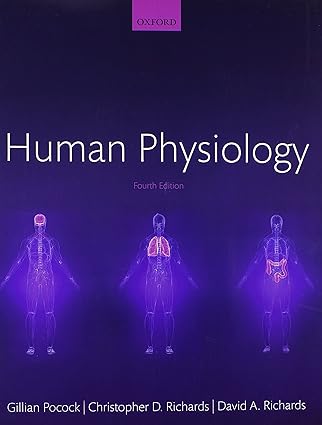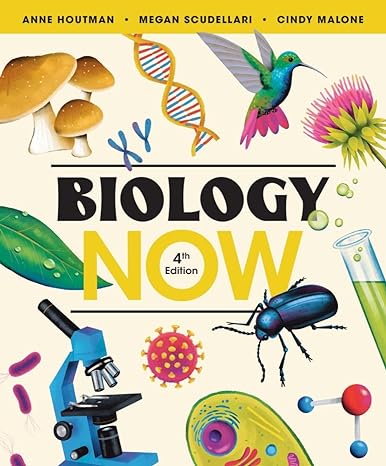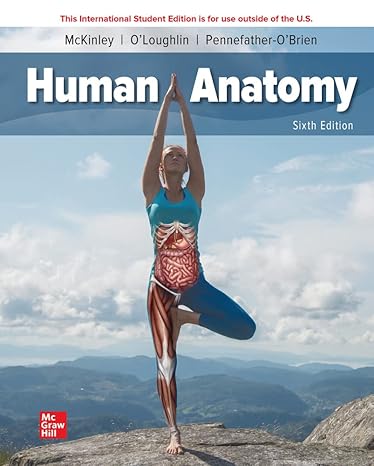ORIGINS OF THIS WORK I was trained in both counseling psychology and environmental science. 8 My first profes- sional job was counseling troubled youth and their families. After a few years, however, I felt the approaches I learned in graduate school were inadequate for the job. The dominant reason was that they focused only on the dynamics between parents and their children and neglected the historic and intergenerational, as well as ongoing economic, social, racial, and environmental traumas that interacted to produce family and child dysfunction. 9 These con- cerns, and the resulting burn out I experienced, led me to leave the mental health field and focus exclusively on ecological issues. Twenty-five years later, I ended up directing the Climate Leadership Initiative (CLI), which was affiliated with the University of Oregon. During this time, the field of climate science was rapidly advancing, and I had the opportunity to interact with many top climate scientists. The CLI initially focused on both climate mitigation, which is action to reduce green- house gas emissions, and climate adaptation, which is action to prepare for and adapt to the impacts of a disrupted climate system. We helped nonprofit, private, and public organi- zations throughout the US develop climate action plans and, like most other organizations working on these issues, we primarily focused on the external technological and physical changes involved with mitigation and adaptation. 10 The limits of our work, however, and a glaring hole in the climate field as a whole, became evident to me after Hurricane Sandy slammed the East Coast of the US in 2012, producing high levels of severe anxiety, depression, PTSD, and other mental health prob- lems.11 I knew the climate emergency was going to get far worse and feared that unless we got ahead of these problems, millions of people in the US, and billions worldwide would 4 Introduction experience significant distresses and traumas. This was of great concern because no other health problems come close to generating the extent and persistence of personal, family, social, economic, and political troubles as those caused by mental health and psycho-social- spiritual maladies. In addition, I was concerned that the traumas generated by the impacts of the long climate crisis would activate a vicious cycle of frightened people further damaging the earth’s ecological systems as they tried to protect themselves from climate impacts, which would circle back to increase the ecological damage that caused their stresses and traumas. 12 Further, traumatized people can’t resolve complex problems like the climate emergency. They tend to retreat into a self-protective survival mode that produces denial and dissocia- tion and creates opposition to anything that seems threatening. Included can be things like changes in consumption patterns that will be needed to reduce greenhouse gas emissions and regenerate ecological systems. This made me worried that left unaddressed, widespread climate distresses and traumas would make the changes required to reduce the climate emer- gency to manageable levels all but impossible. These concerns led me to reenter the mental health field, this time with a focus on how the direct and indirect impacts of the climate crisis would undermine individual and collec- tive mental wellness and resilience, and how those impacts could be prevented and healed. I summarized my early work, which focused primarily on the benefit of everyone learning “Presencing” (or self-regulation) and “Purposing” (or adversity-based growth) skills in the book Transformational Resilience: How Building Human Resilience to Climate Disruption Can Safeguard Society and Increase Wellbeing,. I also organized the International Transformational Resilience Coalition (ITRC), a network of mental health, social service, climate, faith, and other orga- nizations and individual professionals, to work on the issues. During our first few years, the ITRC ran conferences and held workshops and webi- nars to raise awareness of the coming rush of climate change-generated mental health and psycho-social-spiritual problems. We also trained people in how to teach age and culturally appropriate resilience skills to others. 13 This work took place within the context of the exist- ing mental health and social services systems of the US and other industrialized nations. It eventually became evident, however, that the approaches that dominate these fields were shaped by narrow perspectives about the causes of, and solutions to, widespread mental health and psycho-social-spiritual problems. The limited assumptions and beliefs produced a crisis and illness-focused system operated by credentialed professionals who treat individuals and families, mostly one-at-a-time, only after they show symptoms of psychopathology, and often with medication. No society, however, has ever fostered widespread mental wellness and resilience by merely fixing deficits or treating traumatized individuals one-at-a-time. And, a large body of research exists on the benefits of a more holistic approach that builds population-level—or universal—capacity to prevent and heal distresses and traumas. In the US, and most other industrial nations, however, the current system remains firmly rooted in the professionally run, individualized, deficit and pathology-based mental health treatment and direct human services approach. This realization spurred an intensive two-year investigation into approaches that can enhance the entire population’s capacity for psychological, emotional, and spiritual wellness and resilience during relentless climate adversities, as they engage in actions that help reduce the crisis to manageable levels. This book describes the findings. Introduction 5 THE LOOMING CLIMATE OVERSHOOT The first step in grasping the need to rapidly shift the responsibility for preventing and heal- ing mental health and psycho-social-spiritual problems back to communities is to come to grips with the reality that humanity is in the midst of a multi-faceted mega-emergency that will profoundly alter every aspect of civilization. As will be described in greater detail in Chapter 1, average global temperatures have already risen by more than 1.8 degrees Fahrenheit (1.04 Celsius) since the Industrial Revo- lution began in the mid-1800s. The earth’s surface temperatures have been getting progres- sively warmer during each of the last three decades, and July 2021 was the hottest month ever recorded in human history. Arctic summer sea ice has declined by about 40 percent since records began, and sea levels have been rising every year since the early 1990s. 14 As the impacts seen worldwide already show, any temperature increase above pre- industrial levels harms people and the planet. Climate science has determined that if average global surface temperatures rise more than 2.7 degrees Fahrenheit (1.5 Celsius) above those of the mid-1700s, extremely grave and possibly irreversible impacts to the planet and society will be activated.15 Scientists often call this “climate overshoot,” which is the term I will use throughout this book.
چکیده فارسی
منشا این کار من در روانشناسی مشاوره و علوم محیطی آموزش دیدم. 8 اولین کار حرفه ای من مشاوره دادن به جوانان مشکل دار و خانواده هایشان بود. با این حال، پس از چند سال، احساس کردم رویکردهایی که در دوره تحصیلات تکمیلی آموختم برای این شغل ناکافی است. دلیل غالب این بود که آنها فقط بر پویایی بین والدین و فرزندانشان تمرکز کردند و از آسیب های تاریخی و بین نسلی و همچنین آسیب های اقتصادی، اجتماعی، نژادی و محیطی مستمری که برای ایجاد اختلال در خانواده و کودک تأثیر متقابل داشتند، غفلت کردند. 9 این نگرانیها و فرسودگی ناشی از آن، باعث شد که حوزه سلامت روان را ترک کنم و منحصراً روی مسائل زیستمحیطی تمرکز کنم. بیست و پنج سال بعد، من در نهایت به مدیریت ابتکار رهبری آب و هوا (CLI) که وابسته به دانشگاه اورگان بود، رسیدم. در این مدت، رشته علوم آب و هوا به سرعت در حال پیشرفت بود و من این فرصت را داشتم که با بسیاری از دانشمندان برتر اقلیم ارتباط برقرار کنم. CLI در ابتدا بر کاهش آب و هوا، که اقدامی برای کاهش انتشار گازهای گلخانه ای است، و سازگاری با آب و هوا، که اقدامی برای آماده سازی و انطباق با تأثیرات یک سیستم آب و هوایی مختل است، تمرکز داشت. ما به سازمانهای غیرانتفاعی، خصوصی و عمومی در سرتاسر ایالات متحده کمک کردیم تا برنامههای اقدام آب و هوایی را توسعه دهند و مانند بسیاری از سازمانهای دیگر که روی این موضوعات کار میکنند، عمدتاً بر تغییرات فنی و فیزیکی خارجی مرتبط با کاهش و سازگاری تمرکز کردیم. 10 با این حال، محدودیتهای کار ما و یک حفره آشکار در زمینه آب و هوا به طور کلی، پس از طوفان سندی که ساحل شرقی ایالات متحده را در سال 2012 کوبید، برای من آشکار شد و سطوح بالایی از اضطراب شدید، افسردگی، PTSD و PTSD را ایجاد کرد. سایر مشکلات سلامت روان. 11 می دانستم که وضعیت اضطراری آب و هوا بدتر خواهد شد و می ترسیدم که اگر از این مشکلات غلبه نکنیم، میلیون ها نفر در ایالات متحده و میلیاردها نفر در سراسر جهان دچار پریشانی ها و آسیب های جدی خواهند شد. این موضوع بسیار نگران کننده بود، زیرا هیچ مشکل بهداشتی دیگری به اندازه مشکلات فردی، خانوادگی، اجتماعی، اقتصادی و سیاسی ناشی از سلامت روانی و بیماری های روانی-اجتماعی-روحی به وجود نمی آید. علاوه بر این، من نگران بودم که آسیب های ناشی از اثرات بحران طولانی آب و هوا، چرخه معیوبی از افراد وحشت زده را فعال کند که به سیستم های اکولوژیکی زمین آسیب بیشتری وارد می کنند، زیرا آنها سعی می کردند از خود در برابر اثرات آب و هوایی محافظت کنند، که برای افزایش اکولوژیکی به عقب برمی گردد. آسیب هایی که باعث استرس و آسیب های آنها شده است. 12 علاوه بر این، افراد آسیب دیده نمی توانند مشکلات پیچیده ای مانند شرایط اضطراری آب و هوا را حل کنند. آنها تمایل به عقب نشینی به یک حالت بقای خود محافظتی دارند که باعث انکار و تفکیک می شود و مخالفت با هر چیزی را که به نظر تهدید کننده به نظر می رسد ایجاد می کند. مواردی مانند تغییرات در الگوهای مصرف که برای کاهش انتشار گازهای گلخانهای و بازسازی سیستمهای زیستمحیطی مورد نیاز است، شامل میشود. این من را نگران کرد که عدم رسیدگی، پریشانیها و آسیبهای اقلیمی گسترده، تغییرات لازم برای کاهش شرایط اضطراری آبوهوایی را به سطوح قابل مدیریت، اما غیرممکن میسازد. این نگرانیها من را بر آن داشت تا دوباره وارد حوزه سلامت روان شوم، این بار با تمرکز بر این که چگونه تأثیرات مستقیم و غیرمستقیم بحران آبوهوایی سلامت روانی و تابآوری فردی و جمعی را تضعیف میکند و چگونه میتوان از این تأثیرات پیشگیری و درمان کرد. من کارهای اولیهام را که عمدتاً بر سود یادگیری مهارتهای «حضور» (یا خودتنظیمی) و «هدفسازی» (یا رشد مبتنی بر ناملایمات) متمرکز شده بود را در کتاب تابآوری تحولآفرین: چگونه ایجاد تابآوری انسانی در برابر اختلالات اقلیمی میتوان خلاصه کرد. حفاظت از جامعه و افزایش رفاه،. من همچنین ائتلاف بینالمللی تابآوری تحولآفرین (ITRC)، شبکهای از سلامت روان، خدمات اجتماعی، اقلیم، ایمان، و سایر سازمانها و افراد حرفهای را سازماندهی کردم تا روی این موضوعات کار کنند. در طول چند سال اول ما، ITRC کنفرانسهایی برگزار کرد و کارگاهها و وبینارهایی را برای افزایش آگاهی در مورد هجوم آینده سلامت روانی و مشکلات روانی-اجتماعی-روانی ناشی از تغییرات آب و هوایی برگزار کرد. ما همچنین به افراد آموزش دادیم که چگونه مهارتهای تابآوری متناسب با سن و فرهنگی را به دیگران آموزش دهند. 13 این کار در چارچوب سیستمهای سلامت روان و خدمات اجتماعی موجود در ایالات متحده و سایر کشورهای صنعتی انجام شد. با این حال، در نهایت آشکار شد که رویکردهای حاکم بر این حوزهها با دیدگاههای محدود درباره علل و راهحلهای بهداشت روانی گسترده و مشکلات روانی-اجتماعی-روحی شکل گرفته است. مفروضات و باورهای محدود یک سیستم متمرکز بر بحران و بیماری ایجاد کرد که توسط متخصصان معتبری که افراد و خانوادهها را، عمدتاً یکبار، تنها پس از نشان دادن علائم آسیبشناسی روانی و اغلب با دارو درمان میکنند، اداره میشد. با این حال، هیچ جامعهای هرگز سلامت روانی و تابآوری گستردهای را صرفاً با رفع کاستیها یا درمان یکباره افراد آسیب دیده تقویت نکرده است. و، تعداد زیادی از تحقیقات در مورد مزایای یک رویکرد جامعتر وجود دارد که ظرفیتی در سطح جمعیت – یا جهانی – برای پیشگیری و التیام پریشانیها و آسیبها ایجاد میکند. با این حال، در ایالات متحده و اکثر کشورهای صنعتی دیگر، سیستم فعلی به طور محکم در درمان بهداشت روانی حرفه ای، فردی، کمبود و آسیب شناسی مبتنی بر درمان و خدمات مستقیم انسانی ریشه دارد. این درک یک تحقیق دو ساله فشرده را در مورد رویکردهایی که می تواند ظرفیت کل جمعیت را برای سلامت روانی، عاطفی و معنوی و تاب آوری در طول ناملایمات بی امان آب و هوایی افزایش دهد، زیرا آنها درگیر اقداماتی هستند که به کاهش بحران به سطوح قابل مدیریت کمک می کند. این کتاب به تشریح یافته ها می پردازد. مقدمه 5: غلبه بر آب و هوا در آینده اولین گام برای درک نیاز به انتقال سریع مسئولیت پیشگیری و بهبود سلامت روانی و مشکلات روانی-اجتماعی-روحی به جوامع، درک این واقعیت است که بشریت در میان است. یک مگا اضطراری چند وجهی که عمیقاً هر جنبه ای از تمدن را تغییر خواهد داد. همانطور که در فصل 1 با جزئیات بیشتر توضیح داده خواهد شد، از زمان شروع انقلاب صنعتی در اواسط دهه 1800، میانگین دمای جهانی بیش از 1.8 درجه فارنهایت (1.04 سانتیگراد) افزایش یافته است. دمای سطح زمین در طول هر یک از سه دهه گذشته به تدریج گرمتر شده است و جولای 2021 گرم ترین ماه ثبت شده در تاریخ بشر بوده است. یخ های دریای تابستانی قطب شمال از زمان شروع رکوردها حدود 40 درصد کاهش یافته است و سطح آب دریاها از اوایل دهه 1990 هر سال افزایش یافته است. 14 همانطور که اثرات مشاهده شده در سراسر جهان از قبل نشان می دهد، هر گونه افزایش دما بالاتر از سطوح قبل از صنعتی شدن به مردم و کره زمین آسیب می رساند. علم آب و هوا تعیین کرده است که اگر میانگین دمای سطح زمین بیش از 2.7 درجه فارنهایت (1.5 درجه سانتیگراد) بالاتر از دمای اواسط دهه 1700 افزایش یابد، تأثیرات بسیار شدید و احتمالاً غیرقابل برگشتی بر روی سیاره و جامعه فعال خواهد شد. 15 دانشمندان اغلب این را "اقلیم" می نامند. بیش از حد، که اصطلاحی است که من در سراسر این کتاب استفاده خواهم کرد.
ادامه ...
بستن ...
34 A Public Health Approach 29 World Meteorological Organization. (May 9, 2022). WMO Update: 50:50 Chance of Global Temperatures Temporarily Reaching 1.5°C in Next Five Years. Obtained at: https://public.wmo.int/en/media/press- release/wmo-update-5050-chance-of-global-temperature-temporarily-reaching-15%C2%B0c- threshold 30 Intergovernmental Panel on Climate Change. (2022). Climate Change 2022: Impacts, Adaptation, and Vulnerability. Obtained at: https://www.ipcc.ch/report/ar6/wg2/ 31 Tong D. et al. (July 2019). Committed emissions from existing energy infrastructure jeopardize 1.5 °C climate target. Nature. Obtained at: https://www.nature.com/articles/s41586-019-1364-3 32 Hausfather Z. (2017). Analysis: Why US Carbon Emissions Have Fallen 14% Since 2005. London: Carbon Brief. 33 Sterman J. and Booth Sweeney L. (2007). Understanding public complacency about climate change: adults’ mental models of climate change violate conservation of matter. Climatic Change 80(3–4), 213–238. 34 Kaoru T. et al. (December 2019) Effects on the earth system after realizing a 1.5 C warming climate target after overshooting to the 2C level. Environmental Research Letters. Obtained at: https://- iopscience.iop.org/article/10.1088/1748-9326/ab5199 35 The National Academy of Sciences. (2009). Ecological impacts of climate change. Obtained at: https://www.nap.edu/catalog/12491/ecological-impacts-of-climate-change 36 Caballos G. et al. (July 25, 2017). Biological annihilation via the ongoing sixth mass extinction signaled by vertebrate population losses and declines. Proceedings of the National Academy of Scientists. (2017). Obtained at: https://pubmed.ncbi.nlm.nih.gov/28696295/ 37 Trisos C. et al. (April 8, 2020). The projected timing of abrupt ecological disruption from climate change. Nature. Obtained at: https://www.nature.com/articles/s41586-020-2189-9 38 National Research Council. (2008). Ecological Impacts of Climate Change. Washington, DC: The National Academies Press. https://doi.org/10.17226/12491. Obtained at: https://nap.nation- alacademies.org/catalog/12491/ecological-impacts-of-climate-change 39 Gustin G. (April 27, 2022). UN report says humanity has altered 70 percent of the earth’s lane, putting the planet on a ‘crisis footing.’ Inside Climate News. Obtained at: https://insideclimatenews. org/news/27042022/agriculture-land-report/ 40 Buck H.J. (November 2021). Ending Fossil Fuels: Why Net Zero Emissions Is Not Enough. London UK and New York, NY: Verso Books. 41 Pidcock R. (2016). Half a degree makes a very big difference when judging how different parts of the world will feel the effects of climate change. Carbon Brief. Obtained at: https://www.carbon- brief.org/scientists-compare-climate-change-impacts-at-1-5c-and-2c 42 For more information, see The Global Footprint Network at: https://www.footprintnetwork.org/ (Full disclosure: I was one of the original board members of the GFN). 43 Fischer E.M. et al. (July 26, 2021). Increasing probability of record shattering climate extremes. Nature Climate Change, 11, 689–695. Obtained at: https://www.nature.com/articles/s41558-021-01092-9 44 IPCC Climate Change. (2021). The Physical Science Basis. Contribution of Working Group I to the Sixth Assessment Report of the Intergovernmental Panel on Climate Change. 45 National Interagency Fire Center. (2020). Wildland Fire Summary and Statistics Annual Reports. Obtained at: https://www.nifc.gov/fire-information/statistics 46 U.N. Environmental Agency. (February 23, 2022). Number of wildfires to rise by 50% by 2010 and governments are not prepared, experts warn. Obtained at: https://www.unep.org/news-and- stories/press-release/number-wildfires-rise-50–2100-and-governments-are-not-prepared 47 IPCC Climate Change. (2021). The Physical Science Basis. Contribution of Working Group I to the Sixth Assessment Report of the Intergovernmental Panel on Climate Change. Obtained at: https://www.ipcc. ch/report/ar6/wg1/ 48 Ibid. 49 Ibid. 50 Park W. A. et al. (2022). Rapid intensification of the emerging southwestern North American megadrought in 2020–2021. Nature Climate Change. Obtained at: https://doi.org/10.1038/s41558- 022-01290-z 51 Ibid. 52 IPCC Climate Change. (2021). The Physical Science Basis. Contribution of Working Group I to the Sixth Assessment Report of the Intergovernmental Panel on Climate Change. 53 Climate Central. (No date). Land projected to be below annual flood level in 2050. Obtained at: https://coastal.climatecentral.org/map/14/-8.4653/51.9061/?theme=sea_level_rise&map 54 Kulp S. and Strauss B. (October 29, 2019). New Elevation Data Triple Estimates of Global Vulnerabil- ity to Sea-Level Rise and Coastal Flooding. Obtained at: https://www.ncbi.nlm.nih.gov/pmc/articles/ PMC6820795/ Climate Overshoot “101” 35 55 National Oceanic and Atmospheric Administration. (April 1, 2020). Ocean Acidification. Obtained at: https://www.noaa.gov/education/resource-collections/ocean-coasts/ocean-acidification 56 Boers N. (2021). Observation-based early-warning signals for a collapse of the Atlantic Meridional overturning circulation. Natural Climate Change. Obtained at: https://doi.org/10.1038/s41558-021- 01097-4 57 Gustin G. (April 27, 2022). UN report says humanity has altered 70 percent of the earth’s lane, putting the planet on a ‘crisis footing.’ Inside Climate News. Obtained at: https://insideclimatenews. org/news/27042022/agriculture-land-report/ 58 Food and Agricultural Organization of the United Nations. (2020). The State of the World’s Forests. Obtained at: http://www.fao.org/state-of-forests/en/ 59 Almond R. E. A., Grooten M. and Petersen T. Eds. (2020). Living Planet Report 2020 – Bending the Curve of Biodiversity Loss. World Wildlife Fund. Obtained at: https://www.zsl.org/sites/default/ - files/LPR%202020%20Full%20report.pdf 60 Zhou X. et al. (August 2021). Excess of COVID-19 cases and deaths due to find particle mat- ter exposure during the 2020 wildfires in the U.S. Science Advances, 7(33), Obtained at: eabi8789. https://doi.org/10.1126/sciadv.abi8789 61 Harper R. and Karnauskas K. (November 13, 2018). The influence of interannual climate variabil- ity on regional violent crime rates in the United States. GeoHealth. Obtained at: https://agupubs. onlinelibrary.wiley.com/doi/10.1029/2018GH000152; and Schinasi L. and Hamra G. (December 2017). A time series analysis of associations between daily temperature and crime events in Phila- delphia, Pennsylvania. Journal of Urban Health. Obtained at: https://doi.org/10.1007/s11524-017- 0181-y. Otto F. (September 25, 2017). Violent crime increases during warmer weather, no matter the season. 62 Heilmann K. and Kahn M. (June 2019). The Urban Crime and Heat Gradient in High and Low Poverty Areas. National Bureau of Economic Research, Working Paper No. 25961. Obtained at: https://- www.nber.org/system/files/working_papers/w25961/w25961.pdf 63 Burke M. et al. (July 2018). Higher temperatures increase suicide rates in the United States and Mexico. Nature Climate Change, 8, 723–729. Obtained at: https://doi.org/10.1038/s41558-018- 0222- x 64 NOAA National Centers for Environmental Information. (April 8, 2022). Billion Dollar Weather and Climate Disasters. Obtained at: https://www.ncdc.noaa.gov/billions/ 65 European Environmental Agency. Economic Losses from Climate Related Extremes in Europe. Obtained at: https://www.eea.europa.eu/data-and-maps/indicators/direct-losses-from-weather-disasters- 4/assessment 66 Kiersz A. (July 19, 2019). This heat wave is going to make you — and the rest of America — less productive, by as much as 28%. Insider. Obtained at: https://www.businessinsider.com/heat-wave- effects-on-economic-productivity-2019-7 67 IPCC Climate Change. (2021). The Physical Science Basis. Contribution of Working Group I to the Sixth Assessment Report of the Intergovernmental Panel on Climate Change. 68 Yuanyu X. et al. (March 28, 2022). Tripling of western US particulate pollution from wildfires in a warming climate. PNAS, 119(13). Obtained at: https://www.pnas.org/ 69 UNICEF. (May 18, 2021). Water and Global Climate Crisis: 10 Things You Should Know. Obtained at: https://www.unicef.org/stories/water-and-climate-change-10-things-you-should-know 70 Laurent J. et al. (July 10, 2018). Reduced cognitive function during a heat wave among residents of non-air-conditioned buildings: An observational study of young adults in the summer of 2016. PLoS Medicine, 15(7), e1002605. Obtained at: https://doi.org/10.1371/journal.pmed.1002605 71 Yuanyu X. et al. (March 28, 2022). Tripling of western US particulate pollution from wildfires in a warming climate. PNAS, 119(13). Obtained at: https://www.pnas.org/ 72 Podesta J. (July 2019). The climate crisis, migration, and refugees. Brookings Institute. Obtained at: https://www.brookings.edu/research/the-climate-crisis-migration-and-refugees/ 73 Amaro S. (April 21, 2021). How climate change could be a risk to your savings. CNBC. Obtained at: https://www.cnbc.com/2021/04/21/why-climate-change-is-a-risk-to-financial-markets.html 74 American Psychological Association. (October 2019). Stress Won’t Go Away? Maybe You Are Suffering from Chronic Stress. Obtained at: https://www.apa.org/topics/stress/chronic
ادامه ...
بستن ...
